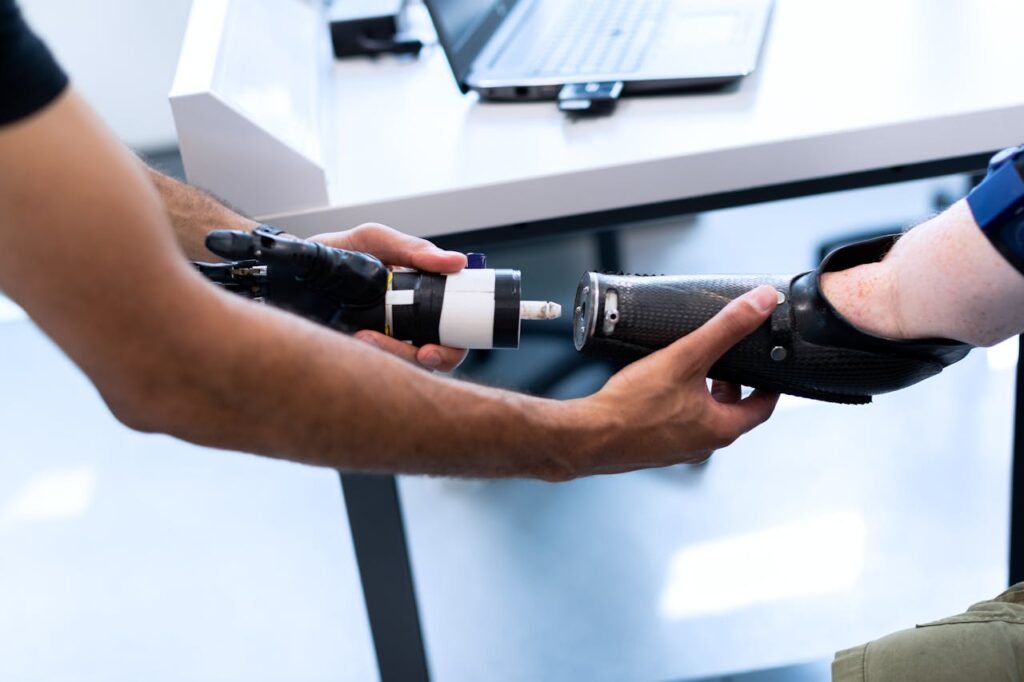Prosthetics are remarkable devices that restore mobility and independence, enabling users to perform daily activities with confidence. For jointed prosthetics, which replicate the intricate movements of human joints, proper maintenance is essential to ensure smooth operation and long-term reliability. Among the most critical aspects of care is lubrication.
Lubrication plays a central role in maintaining jointed prosthetics by reducing friction, preventing wear, and ensuring seamless movement. Without regular lubrication, joints can become stiff, noisy, or even prone to damage. This article explores the science behind prosthetic lubrication, practical tips for upkeep, and how businesses like Robobionics are pioneering advancements in prosthetic care.
Why Lubrication is Essential for Jointed Prosthetics
Jointed prosthetics mimic the complex motion of natural joints, whether it’s the hinge-like movement of a knee or the rotational flexibility of a wrist.
These prosthetics are made up of intricate mechanical parts, including pivots, bearings, and screws, which must work in harmony. Lubrication is the unsung hero that keeps these components functioning smoothly.
Reducing Friction
Friction is the enemy of efficiency in any mechanical system, and jointed prosthetics are no exception. When two surfaces rub against each other, friction generates heat and wear, compromising the performance and longevity of the device.
Lubricants form a protective film between these surfaces, reducing contact and allowing parts to glide effortlessly.
For example, a well-lubricated knee joint in a prosthetic leg ensures smooth bending and straightening motions, enabling the user to walk naturally without stiffness or resistance.
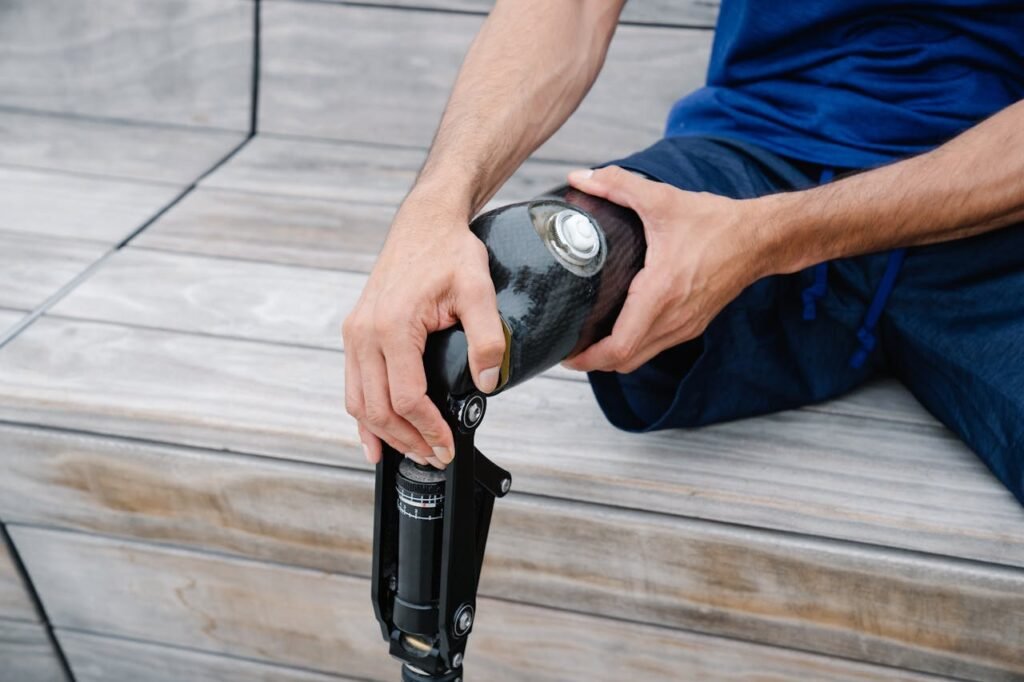
Preventing Wear and Tear
Prosthetics are subjected to repetitive motion and significant weight-bearing forces, making them vulnerable to wear over time. Joints that lack proper lubrication can grind against each other, leading to scratches, cracks, or deformations.
Lubricants act as a cushion, absorbing some of the stress and protecting the metal or composite materials from damage. This not only extends the life of the prosthetic but also reduces the frequency of repairs or replacements.
Ensuring Quiet Operation
Noise can be a concern with poorly maintained jointed prosthetics. Squeaking, creaking, or clicking sounds often indicate a lack of lubrication, as dry joints struggle to move smoothly. Proper lubrication eliminates these noises, allowing the prosthetic to operate discreetly and comfortably.
Choosing the Right Lubricant for Your Prosthetic
Not all lubricants are created equal, and choosing the right one is crucial for maintaining your prosthetic. Different materials, joint designs, and environmental conditions require specific types of lubrication to perform effectively.
Types of Lubricants
Prosthetics typically rely on synthetic or silicone-based lubricants designed for precision machinery. These lubricants are lightweight, non-corrosive, and capable of withstanding a wide range of temperatures.
Silicone-based lubricants, in particular, are popular for their long-lasting performance and resistance to water.
For advanced bionic prosthetics with electronic components, manufacturers may recommend specialized lubricants that are safe for use around sensitive circuitry.
Always consult your prosthetist or the device’s user manual to identify the most suitable lubricant for your prosthetic.
Considering Environmental Factors
Environmental conditions can significantly impact the performance of lubricants. For instance, individuals living in humid climates may need water-resistant lubricants to prevent moisture buildup, while those in colder regions should opt for lubricants that remain effective at low temperatures.
Your activity level also plays a role. If you frequently engage in high-impact activities or sports, you may require a lubricant with superior durability to withstand increased wear and tear.
Frequency of Lubrication
How often you lubricate your prosthetic joints depends on several factors, including the type of prosthetic, your activity level, and environmental conditions.
For most users, a monthly lubrication routine is sufficient to maintain optimal performance. However, high-impact users or those exposed to challenging conditions, like dust or moisture, may need to lubricate more frequently.
It’s also essential to inspect your prosthetic regularly for signs of dryness, stiffness, or noise, as these are indicators that lubrication may be required sooner than scheduled. Regular communication with your prosthetist can help you establish a routine that aligns with your specific needs.
Applying Lubrication: Best Practices
Lubricating your prosthetic is a straightforward process, but it requires attention to detail to ensure effectiveness and avoid unintended issues. A well-executed lubrication routine can significantly enhance the performance and longevity of your prosthetic.
Preparing Your Prosthetic
Before applying any lubricant, clean the joint thoroughly to remove dust, dirt, or old lubricant residue. Use a soft, lint-free cloth and a gentle cleaning solution approved for your prosthetic’s materials.
For tighter spaces or intricate mechanisms, a small brush or compressed air can help dislodge debris.
Dry the joint completely after cleaning, as moisture can interfere with the lubricant’s effectiveness or contribute to corrosion.
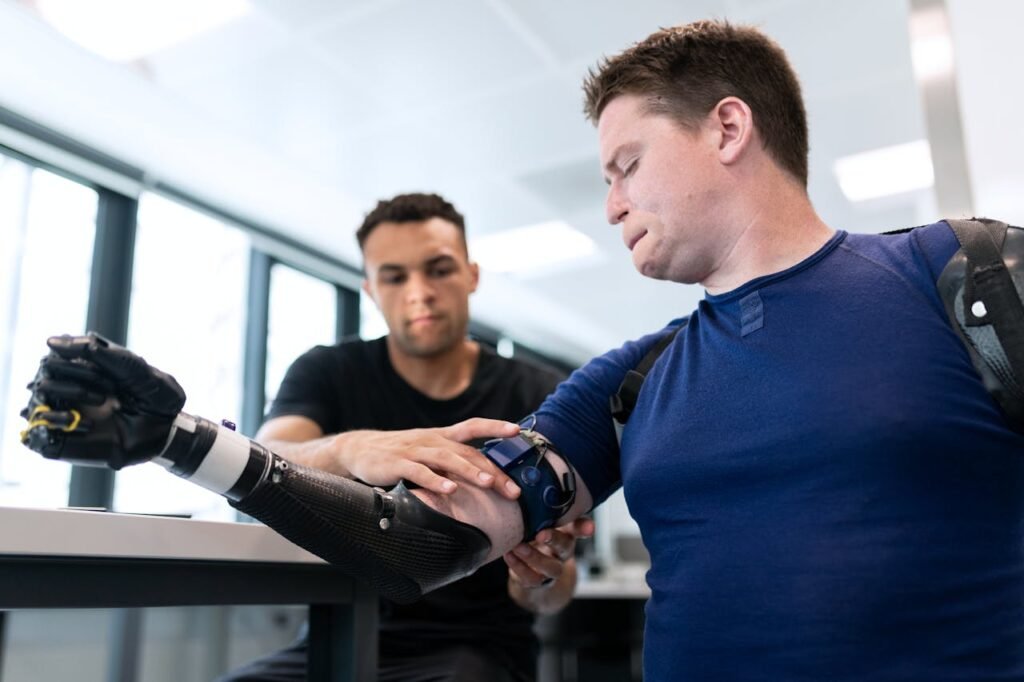
Applying the Lubricant
Once the joint is clean and dry, apply a small amount of the recommended lubricant directly to the moving parts. Be careful not to over-lubricate, as excess lubricant can attract dust or create a sticky buildup that hinders movement.
For precise application, many lubricants come in bottles with narrow nozzles or applicators. Distribute the lubricant evenly across the joint, moving the parts gently to ensure full coverage. If you’re unsure about the application process, consult your prosthetist for guidance.
Post-Lubrication Checks
After lubricating, test the prosthetic by performing a range of movements to ensure the joint operates smoothly. Listen for any lingering noises and feel for stiffness or resistance. If the joint still feels dry, apply a bit more lubricant and repeat the process.
Keep an eye on the joint over the next few days to ensure the lubrication remains effective. If performance issues persist, professional maintenance may be necessary.
The Long-Term Benefits of Regular Lubrication
While lubrication may seem like a small aspect of prosthetic care, its long-term benefits are profound. Consistent lubrication routines not only enhance daily performance but also contribute to the overall lifespan of the device, reducing the need for costly repairs or replacements.
Enhancing Comfort and Confidence
Smooth, well-lubricated joints improve the functionality of the prosthetic, making movements more natural and comfortable. This reduces the physical effort required for activities like walking, lifting, or bending, allowing users to focus on their tasks without distraction.
In addition to physical comfort, regular lubrication provides peace of mind. Knowing your prosthetic is in optimal condition allows you to move confidently, whether you’re navigating daily routines or pursuing ambitious goals.
Minimizing Downtime
Prosthetic repairs or replacements can be disruptive, particularly if they require time away from work, travel, or other responsibilities. Regular lubrication minimizes wear and tear, reducing the likelihood of unexpected issues that could lead to downtime.
For businesses like Robobionics, emphasizing the importance of lubrication aligns with our mission to enhance independence and mobility for our users.
By providing resources and support for routine maintenance, we help users avoid preventable setbacks and maintain an active lifestyle.
Supporting Users with Lubrication Guidance
Proper lubrication practices benefit not only users but also businesses, as they strengthen customer satisfaction and loyalty. Companies that provide clear, actionable maintenance guidance can empower users to care for their prosthetics confidently.
Providing Accessible Instructions
Manufacturers can include detailed maintenance instructions with every prosthetic, explaining how and when to apply lubrication. Visual aids, such as diagrams or videos, can make the process easier to understand, especially for first-time users. Offering multilingual resources ensures accessibility for a wider audience.
For example, Robobionics could develop an online tutorial series covering topics like joint cleaning, selecting the right lubricant, and troubleshooting common issues.
Interactive features, such as live Q&A sessions, allow users to address concerns in real-time, creating a more personalized experience.
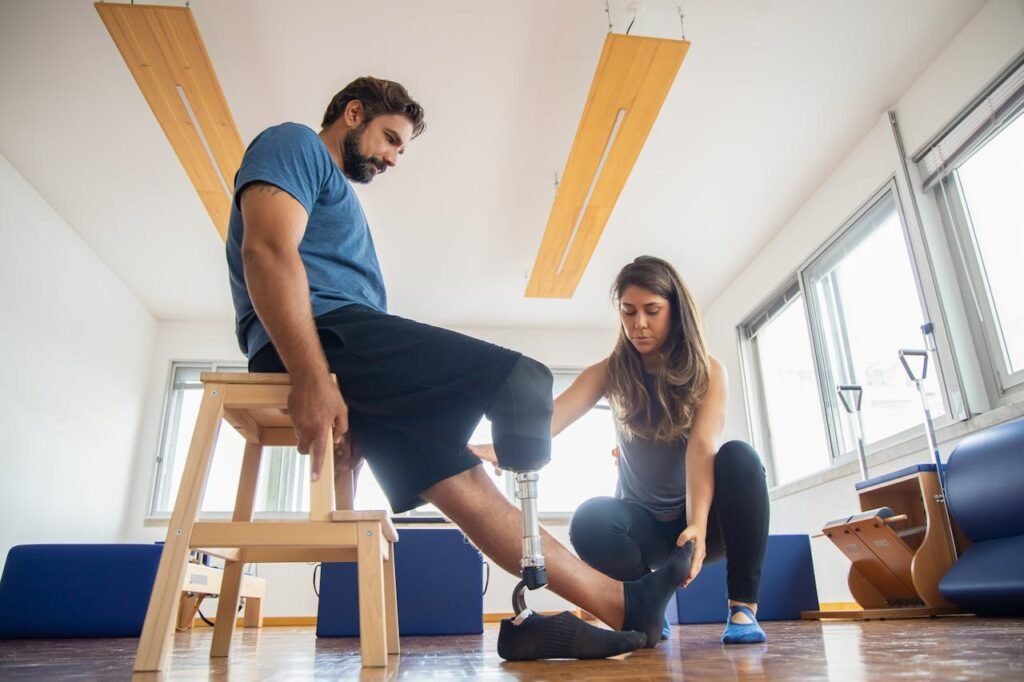
Offering Tailored Support
Not all users have the same needs when it comes to prosthetic care. Activity level, environmental conditions, and the type of prosthetic all influence lubrication routines. Providing tailored advice helps users optimize their care routines for their specific circumstances.
For instance, Robobionics could offer virtual consultations with prosthetists to help users determine the best lubrication schedule and products for their lifestyle. By tailoring support to individual needs, businesses build trust and demonstrate their commitment to user success.
Developing Intuitive Instructional Materials
Instructional materials should be clear, concise, and tailored to the diverse needs of prosthetic users. Businesses can create multi-format guides that cater to varying levels of technical understanding.
For example, a combination of written manuals, visual infographics, and video tutorials can make lubrication practices easy to grasp for users of all backgrounds.
Businesses can further simplify the process by using real-life scenarios in their materials. Instead of generic advice, they can outline specific situations users might face—such as how to lubricate after exposure to sand during a beach outing or after extensive activity in dusty environments.
This approach not only makes the guidance relatable but also prepares users for real-world challenges.
Personalized Support Options
Not all prosthetic users have the same maintenance needs. Factors such as activity level, climate, and the type of prosthetic all play a role in determining the frequency and method of lubrication.
Businesses can offer personalized consultations to help users develop maintenance routines that align with their unique requirements.
For instance, virtual consultations with prosthetists or product specialists can provide tailored advice based on a user’s lifestyle. A person living in a humid climate might learn to prioritize water-resistant lubricants, while an athlete could be guided on high-durability products for intensive use.
Personalized support demonstrates a business’s commitment to user success, encouraging long-term engagement.
Designing User-Friendly Lubrication Kits
One practical way to guide users is by offering comprehensive lubrication kits specifically designed for the prosthetic model. These kits could include the recommended lubricant, cleaning tools, applicators, and a step-by-step guide.
By bundling all necessary items, businesses eliminate the guesswork for users, ensuring they have everything they need for proper care.
For advanced jointed prosthetics, businesses might consider including smart features, such as QR codes on the packaging. Scanning the code could lead users to online tutorials or tips for troubleshooting specific maintenance challenges.
These small innovations create a seamless support system, reducing confusion and building user confidence.
Encouraging Consistency Through Engagement
Lubrication is most effective when performed consistently, yet users may forget or delay routine maintenance. Businesses can help by implementing engagement strategies that encourage regular care.
For example, sending friendly reminders via email or app notifications to prompt users when it’s time to lubricate can prevent lapses in maintenance.
Interactive features, like maintenance tracking tools or gamified apps, can further motivate users. A digital app that tracks lubrication frequency, offers rewards for regular care, and provides visual feedback on prosthetic performance can turn a routine task into a positive and engaging experience.
Partnering with Healthcare Providers
Collaborating with prosthetists and rehabilitation centers allows businesses to provide comprehensive lubrication guidance as part of the broader prosthetic care process.
Healthcare providers can reinforce the importance of lubrication during check-ups or therapy sessions, creating a consistent message across touchpoints.
For instance, a prosthetist might demonstrate proper lubrication techniques during an initial fitting, while businesses provide supplementary materials to reinforce those lessons. This integrated approach ensures users feel supported at every stage of their journey, from the clinic to daily life.

Innovations in Prosthetic Lubrication
The field of prosthetics is constantly evolving, and advancements in lubrication technology are playing a role in improving performance and ease of care. Innovations in materials, application methods, and smart monitoring systems are making maintenance more efficient and effective.
Advanced Lubricants for High Performance
New generations of lubricants are being developed to meet the unique demands of prosthetic joints. These include self-lubricating materials that reduce the need for frequent applications and eco-friendly formulas designed to minimize environmental impact.
For example, certain high-performance synthetic lubricants can withstand extreme temperatures and resist water, making them ideal for users in challenging climates. Businesses that invest in these cutting-edge solutions offer users enhanced durability and reliability.
Integrated Maintenance Systems
Smart prosthetics are increasingly incorporating technology to streamline maintenance. Devices equipped with sensors can monitor joint performance in real-time, detecting signs of wear or dryness and alerting users when lubrication is needed.
For instance, a sensor might measure friction levels within the joint and send a notification to a connected app, reminding the user to apply lubricant. This proactive approach reduces the risk of damage and ensures optimal functionality at all times.
Simplifying the Process
Innovations in lubrication application are also making the process more user-friendly. For example, single-use applicators with pre-measured doses eliminate guesswork, ensuring users apply the right amount of lubricant every time.
Manufacturers could explore partnerships with suppliers to bundle these convenient tools with prosthetics or offer them as part of a maintenance kit. By simplifying the process, businesses make routine care accessible and stress-free for all users.
Educating the Community
Beyond individual users, businesses can play a role in educating the broader community about the importance of lubrication in prosthetic maintenance.
Awareness campaigns, workshops, and partnerships with advocacy groups create opportunities to share knowledge and promote best practices.
Hosting Workshops and Events
Businesses can organize workshops that teach users and caregivers how to maintain jointed prosthetics. These events provide hands-on training and offer a platform for attendees to ask questions and share experiences.
For instance, Robobionics could host regional events demonstrating the correct way to clean and lubricate prosthetics, alongside discussions on emerging technologies. Virtual workshops could expand this reach, making it accessible to users worldwide.

Collaborating with Healthcare Providers
Partnering with prosthetists, rehabilitation centers, and physical therapists ensures that users receive consistent messaging about maintenance. Healthcare providers can reinforce the importance of lubrication during routine check-ups or rehabilitation sessions, complementing the resources provided by businesses.
By integrating lubrication education into care protocols, businesses and healthcare providers create a unified approach to prosthetic maintenance.
Crafting Engaging Educational Content
One of the most effective ways to educate the community is by creating engaging, accessible content that resonates with diverse audiences. Educational material should focus on simplifying complex concepts and delivering actionable guidance.
Businesses can craft content that explains the science behind lubrication, using visuals like animations or diagrams to demonstrate how friction, wear, and movement impact jointed prosthetics.
Interactive videos or infographics showing step-by-step lubrication processes can also make the learning experience more dynamic. For instance, a short video featuring a prosthetist explaining proper lubrication techniques for different prosthetic joints can help users grasp the topic with ease.
By addressing common concerns, such as how to select the right lubricant or troubleshoot stiffness, businesses make the information directly applicable to everyday care.
Hosting Community-Centric Events
Workshops, webinars, and live demonstrations create valuable opportunities for businesses to engage with the community and provide hands-on learning experiences. These events allow users to interact with experts, ask questions, and practice maintenance techniques in a supportive environment.
For example, Robobionics could organize an annual “Prosthetic Care Day,” featuring sessions on lubrication, cleaning, and troubleshooting. Participants could learn from prosthetists and technicians, exchange tips with peers, and even receive personalized care advice.
Such events not only educate but also foster a sense of community, reinforcing the idea that users are part of a larger, supportive network.
Incorporating virtual options ensures accessibility for users who may face geographic or mobility barriers. A live-streamed demonstration, paired with interactive Q&A sessions, can reach a global audience while maintaining a personal touch.
Leveraging Social Media and Digital Platforms
Social media platforms are powerful tools for reaching a broad audience and promoting education. Businesses can use these platforms to share bite-sized content, such as quick tips, maintenance checklists, or “did-you-know” facts about prosthetic lubrication.
Regular posts that highlight common maintenance mistakes or the benefits of consistent lubrication can keep the topic relevant and engaging.
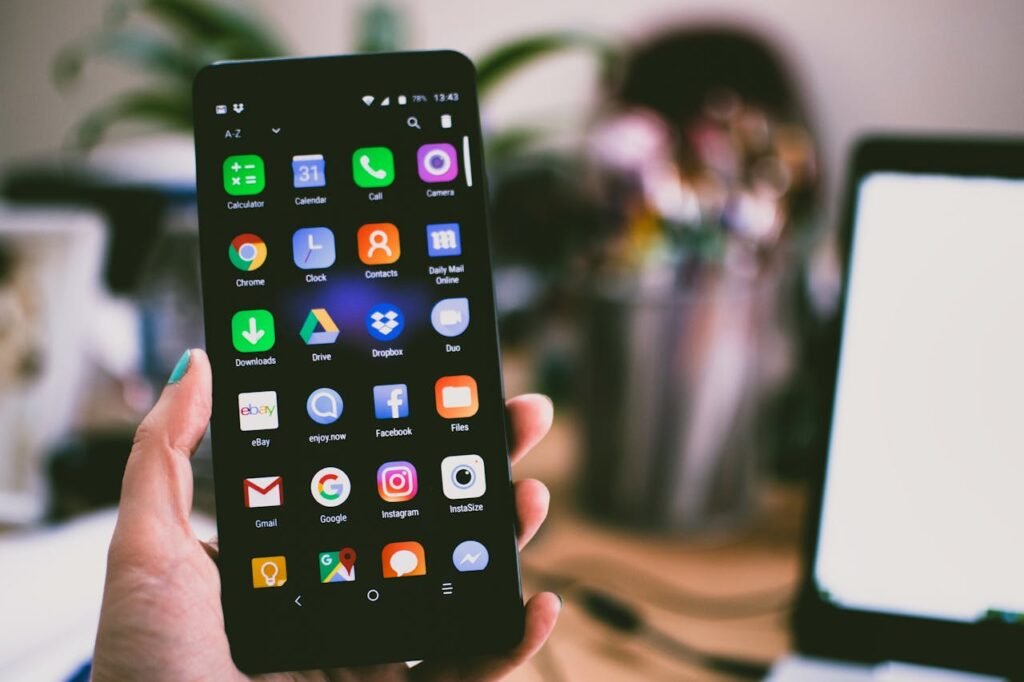
For instance, an Instagram campaign could feature before-and-after scenarios illustrating the difference lubrication makes in joint performance. Pairing these visuals with user testimonials or prosthetist insights creates relatable and compelling narratives that motivate action.
Educational blogs, hosted on a company’s website, offer a more in-depth exploration of topics. A detailed article on how environmental factors affect lubrication needs, for example, could provide valuable insights for users in diverse climates.
Combining blogs with downloadable guides or printable checklists enhances their utility, ensuring users can apply the knowledge to their specific situations.
Conclusion
Proper lubrication is a vital part of maintaining jointed prosthetics, ensuring smooth movement, enhanced comfort, and long-term durability. Whether it’s preventing friction, protecting against wear and tear, or eliminating unwanted noise, regular and thoughtful care can significantly improve the performance and lifespan of these life-changing devices.
For users, understanding the role of lubrication and adopting consistent maintenance routines is key to enjoying the full potential of their prosthetic. Meanwhile, businesses have a crucial role to play in educating, supporting, and innovating to make prosthetic care accessible and efficient.
From providing detailed guides and user-friendly tools to exploring advanced materials and technologies, companies like Robobionics are driving progress in prosthetic maintenance.
At Robobionics, we’re committed to empowering users with the knowledge and resources needed to care for their devices confidently. From personalized guidance to cutting-edge solutions, our mission is to ensure that every step you take with your prosthetic is a step toward freedom and independence.



